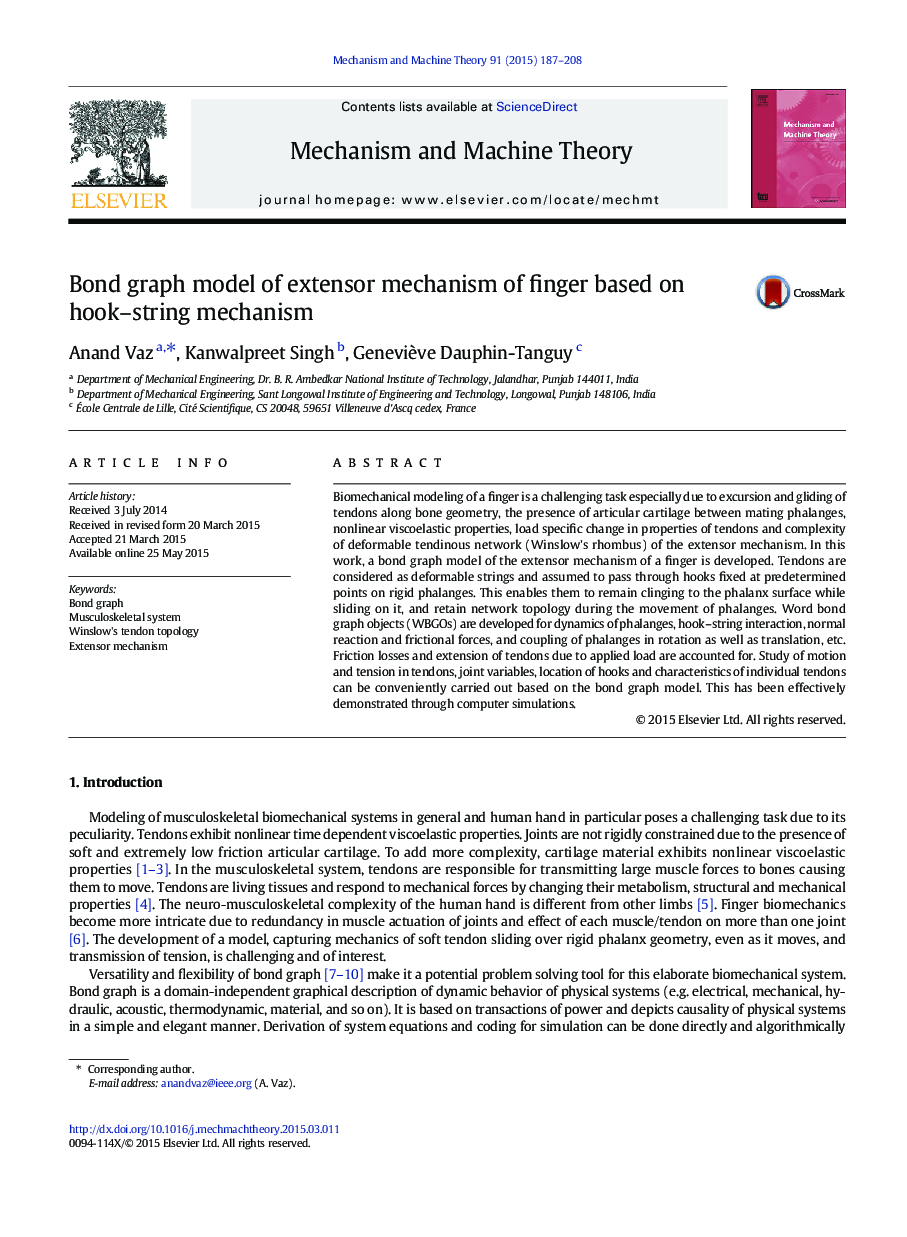| کد مقاله | کد نشریه | سال انتشار | مقاله انگلیسی | نسخه تمام متن |
|---|---|---|---|---|
| 799540 | 1467743 | 2015 | 22 صفحه PDF | دانلود رایگان |
• A bond graph model of the extensor mechanism of a human finger has been developed and simulated.
• Tendon topology of the Winslow’s rhombus is considered as a hook-string subsystem.
• The model emulates grazing action of soft tendons along surfaces of rigid phalanges as they move.
• Normal contact force as well as friction between tendon and curved bone profile is modeled.
• Nonlinear behavior of tendons (4-element Hill's muscle model) and presence of cartilage in synovial joints is accounted for.
Biomechanical modeling of a finger is a challenging task especially due to excursion and gliding of tendons along bone geometry, the presence of articular cartilage between mating phalanges, nonlinear viscoelastic properties, load specific change in properties of tendons and complexity of deformable tendinous network (Winslow's rhombus) of the extensor mechanism. In this work, a bond graph model of the extensor mechanism of a finger is developed. Tendons are considered as deformable strings and assumed to pass through hooks fixed at predetermined points on rigid phalanges. This enables them to remain clinging to the phalanx surface while sliding on it, and retain network topology during the movement of phalanges. Word bond graph objects (WBGOs) are developed for dynamics of phalanges, hook–string interaction, normal reaction and frictional forces, and coupling of phalanges in rotation as well as translation, etc. Friction losses and extension of tendons due to applied load are accounted for. Study of motion and tension in tendons, joint variables, location of hooks and characteristics of individual tendons can be conveniently carried out based on the bond graph model. This has been effectively demonstrated through computer simulations.
Journal: Mechanism and Machine Theory - Volume 91, September 2015, Pages 187–208
